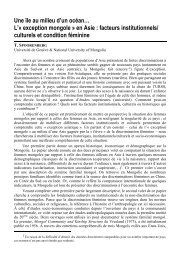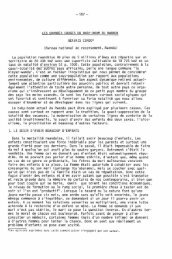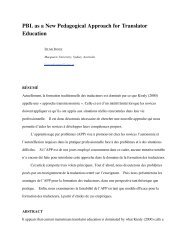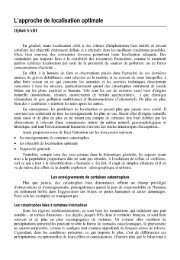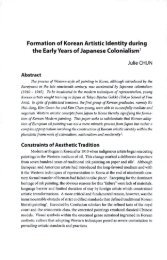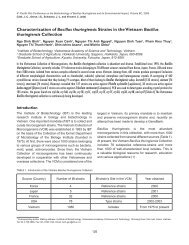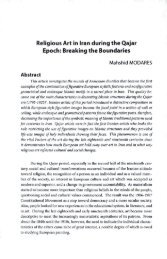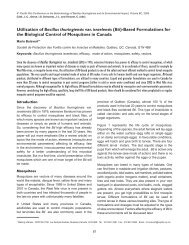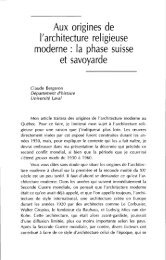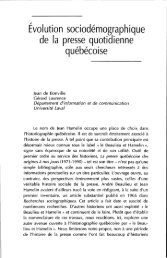A Proactive Approach to the Translation of Bible Stories for Children
A Proactive Approach to the Translation of Bible Stories for Children
A Proactive Approach to the Translation of Bible Stories for Children
Create successful ePaper yourself
Turn your PDF publications into a flip-book with our unique Google optimized e-Paper software.
e applied specifically <strong>to</strong> a South African context 4 . Religious literature was chosen as subject matter<br />
because <strong>of</strong> <strong>the</strong> relative certainty <strong>of</strong> comparative translations in most <strong>of</strong> <strong>the</strong> eleven <strong>of</strong>ficial languages<br />
<strong>of</strong> South Africa. And also because <strong>of</strong> <strong>the</strong> curious integration <strong>of</strong> <strong>the</strong> bible, despite its colonial and<br />
missionary past, in<strong>to</strong> <strong>the</strong> current perception <strong>of</strong> African indigenous knowledge 5 , a unique and<br />
interesting twist in <strong>the</strong> domestication <strong>of</strong> bible translation in Africa 6 .<br />
The Constitution <strong>of</strong> <strong>the</strong> Republic <strong>of</strong> South Africa (1996) recognises eleven <strong>of</strong>ficial languages<br />
and grants special privileges <strong>to</strong> languages used <strong>for</strong> religious purposes 7 . Despite <strong>the</strong> constitutionally<br />
recognised status <strong>of</strong> all eleven <strong>of</strong>ficial languages, <strong>the</strong> position <strong>of</strong> at least nine (with <strong>the</strong> exception <strong>of</strong><br />
English and Afrikaans) is tenuous at best as far as publication in <strong>the</strong>se languages, ei<strong>the</strong>r as medium<br />
<strong>of</strong> translation or <strong>for</strong> original work, are concerned (Fredericks & Mvunelo 2003) 8 .<br />
Afrikaans and English children’s bibles are <strong>the</strong>re<strong>for</strong>e used almost exclusively in this paper <strong>to</strong><br />
illustrate a point that will be extrapolated at a later stage in <strong>the</strong> project <strong>to</strong> <strong>the</strong> (hi<strong>the</strong>r<strong>to</strong>) limited<br />
number <strong>of</strong> o<strong>the</strong>r South African translations <strong>of</strong> children’s bibles. The reason being that Afrikaans is<br />
<strong>the</strong> only <strong>of</strong>ficial South African language, o<strong>the</strong>r than English, that is relatively well represented in<br />
children’s literature at present. Also, where <strong>the</strong> target audience <strong>of</strong> <strong>the</strong> English translation is <strong>of</strong>ten<br />
indeterminate, an Afrikaans translation is <strong>for</strong> obvious reasons tailored <strong>to</strong>wards a very specific South<br />
African context. It is hoped that our work will clearly indicate <strong>the</strong> dire need <strong>for</strong> translations in<strong>to</strong> and<br />
from <strong>the</strong> o<strong>the</strong>r nine <strong>of</strong>ficial languages irrespective <strong>of</strong> <strong>the</strong> subject matter or genre, in order <strong>to</strong> bring all<br />
eleven languages <strong>to</strong> equal status.<br />
2. Cognitive Poetics<br />
In <strong>the</strong> spirit <strong>of</strong> proactive transla<strong>to</strong>logy, this article emphasises Ritta Oittinen’s call (2003: 3) <strong>for</strong><br />
greater emphasis on children’s literature in <strong>the</strong> study <strong>of</strong> translation. It also highlights a proactive<br />
approach <strong>to</strong> <strong>the</strong> study <strong>of</strong> children’s literature: a cognitive poetics framework that we suggest may be<br />
successfully utilised in studying <strong>the</strong> translation <strong>of</strong> children’s literature.<br />
The popular attraction <strong>the</strong> bible holds <strong>for</strong> both <strong>the</strong> religious and non-religious may be<br />
explained <strong>to</strong> some extent by <strong>the</strong> remarkable literary character <strong>of</strong> <strong>the</strong> texts (Nida 2003:81), but also<br />
by its imbeddedness in Western tradition. This ingrained Western interpretative tradition, does<br />
however prove in many respects problematic when translating <strong>the</strong>se texts <strong>for</strong> an African audience,<br />
although <strong>the</strong> underlying oral nature <strong>of</strong> <strong>the</strong> transmission his<strong>to</strong>ry <strong>of</strong> <strong>the</strong> source text, does seem <strong>to</strong><br />
appeal strongly <strong>to</strong> a society where orality still holds definite sway in <strong>the</strong> authoritative transmission<br />
<strong>of</strong> in<strong>for</strong>mation. In this respect <strong>the</strong> target culture is much closer <strong>to</strong> <strong>the</strong> source culture than <strong>the</strong><br />
intervening transmission culture would allow.<br />
<strong>Bible</strong> s<strong>to</strong>ries are both rich in fantasy and myth, while generally carrying <strong>the</strong> added attribute <strong>of</strong><br />
non-fiction <strong>for</strong> <strong>the</strong> religious reader/narra<strong>to</strong>r <strong>of</strong> <strong>the</strong>se texts. These s<strong>to</strong>ries thus embrace <strong>the</strong> traditional<br />
divide between fiction and non-fiction. Fur<strong>the</strong>rmore, <strong>the</strong> s<strong>to</strong>ries are typically interpreted by means<br />
<strong>of</strong> an intermediary, i.e. in this instance, read aloud <strong>to</strong> small children at a specific time, usually just<br />
be<strong>for</strong>e bedtime. As such several developmental and o<strong>the</strong>r concerns contribute <strong>to</strong> <strong>the</strong>ir presentation<br />
and understanding, including <strong>the</strong> oral (pre)his<strong>to</strong>ry (Dollerup 2003: 83-84) <strong>of</strong> <strong>the</strong> source text. A very<br />
accommodating framework is <strong>the</strong>re<strong>for</strong>e needed <strong>to</strong> address <strong>the</strong>se peculiarities and cognitive poetics<br />
provides this: a way <strong>of</strong> thinking about literature, involving <strong>the</strong> application <strong>of</strong> cognitive linguistics<br />
and psychology <strong>to</strong> literary texts. In this it is related <strong>to</strong> literary criticism where <strong>the</strong> focus <strong>of</strong> attention<br />
oscillates between ‘author-text-reader’ (S<strong>to</strong>ckwell 2002: 5) with different approaches placing more<br />
or less emphasis on each <strong>of</strong> <strong>the</strong> three nodes. S<strong>to</strong>ckwell (2002: 5) points out that cognitive poetics<br />
can <strong>the</strong>re<strong>for</strong>e be successfully superimposed on<strong>to</strong> this scheme, in <strong>the</strong> sense that it is not restricted <strong>to</strong><br />
one or <strong>the</strong> o<strong>the</strong>r. Concerned with literary reading, and with both a psychological and linguistic<br />
dimension, cognitive poetics <strong>of</strong>fers a means <strong>of</strong> accommodating interpretation whe<strong>the</strong>r it is an<br />
authorly version <strong>of</strong> <strong>the</strong> world or a readerly account, and thus allows <strong>the</strong> possibility <strong>of</strong> devising how<br />
<strong>the</strong>se interpretations are made manifest in textuality (S<strong>to</strong>ckwell 2002:5).<br />
The foundations <strong>of</strong> cognitive poetics are most directly <strong>to</strong> be found in cognitive linguistics and<br />
cognitive psychology, both in turn <strong>for</strong>ming a large part <strong>of</strong> cognitive science. It is, <strong>the</strong>re<strong>for</strong>e not<br />
surprising that context, cognition, emotion and felt experience are emphasized in cognitive poetics



